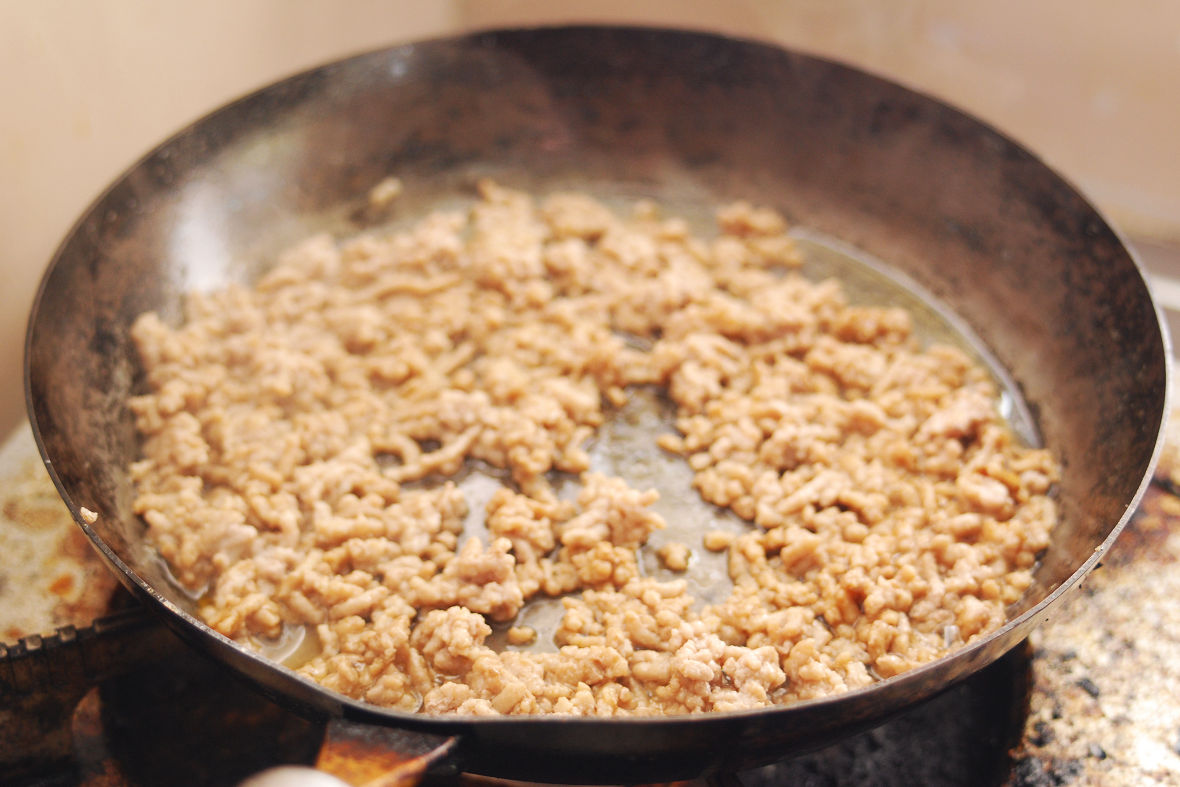“Ramen” noodles are now popular all over the world, for example, in Europe, the US and Asia.
Although Ramen is originated from China, it has been developed independently from the original style in Japan. Now it has taken a firm hold in Japan as a new food culture, which is more and more spreading to the world. Japanese Ramen features a rich variety of flavors such as soy sauce, soybean paste (called Miso), salt, pork bones (called Tonkotsu) and seafood.
Today we would like to show you the whole process to cook Ramen, especially the popular one, “Spicy Miso Ramen”.
Ramen Toppings
Ramen mainly consists of noodles and soup, but toppings are essential. Common toppings are roasted pork fillets, seasoned bamboo shoots, seasoned boiled eggs and dried seaweed.
This time we prepared minced pork seasoned with sweet spicy sauce and fried onions for toppings.
Different toppings will go for each flavor. The common toppings above will be good for soy sauce-based Ramen, likewise, corns and bean sprouts for Miso, chicken ham for salt, red pickled ginger for Tonkotsu.
Noodles
When you handmake noodles, water content ratio and how to knead/beat the noodles will significantly affect their flavor and texture. Of course, you can use the ones from supermarkets instead making them from scratch. Also, thickness and shape vary depending on noodles. Thick curly noodles can absorb much soup while thin straight noodles are good for rich soup like Tonkotsu.
When boiling noodles, separate each noodle by hand before putting them in boiling water and keep each noodle away while boiling as well.
Soup
Pre-warm the bowl to prevent soup getting cold when poured.
Various types of instant soup are sold at Japanese supermarkets. You might be able to get them at your local Asian supermarkets if you are lucky.
It would be totally OK to make your own soup from scratch if you have plenty of time and labour to take. Then simmer chicken carcass, pork bones or vegetables such as onions, carrots and garlics to make soup.
We might present how to cook authentic soup in the near future if we have an opportunity.
Draining noodles
Once the noodles are boiled, drain them with a noodle strainer (called Tebo). There are various ways to do it, but the most important thing is to drain powerfully and thoroughly. So, you should use a Tebo with good strength.
Put the noodles and soup together
Drain the noodles thoroughly and drop them in the soup. Then, use chopsticks to saturate the noodles with soup. Lift up the noodles once and place them in the soup gently (as if laying them down) to serve beautifully.
Put toppings
When you put your favorite toppings, now it’s ready to eat!
Draining and serving should be done quickly to prevent noodles getting limp, soup getting cold, or dried seaweed getting soggy.
It would take a little too much time and effort if you make noodles, grilled pork fillets and soup from scratch. However, by using processed foods from supermarkets, you can make authentic Ramen more easily. Let’s try and enjoy authentic Ramen!











